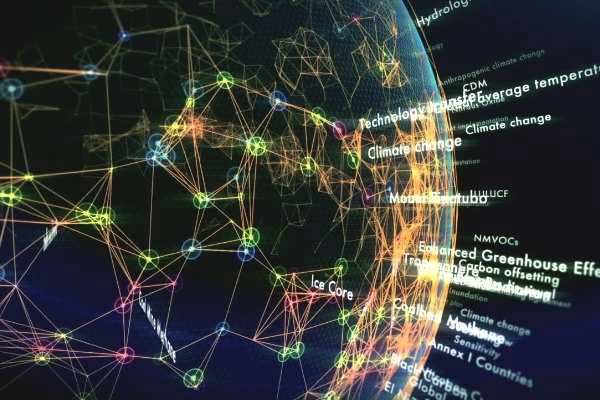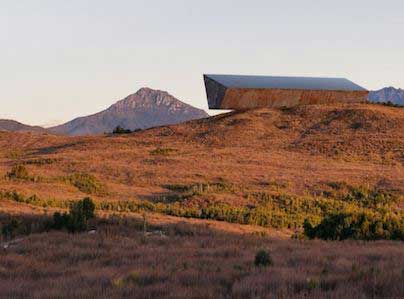Earth’s Black Box is Listening to You
Politicians and business leaders of the world be warned – a steel box is archiving your every decision.

An aviation-style black box has begun chronicling the world’s climate countdown
Politicians and business leaders of the world be warned – a steel box nestled in a remote corner of Tasmania is recording and archiving your every decision.
The indestructible bus-sized object called Earth’s Black Box is currently under construction (see artist’s impression below), but its creators have already begun collecting climate-related headlines, social posts, speech transcripts and scientific data to inform future generations.
The 10-metre long, 7.5-centimetre-thick reinforced steel Black Box will capture two types of data; climate-related news, including the COP26 climate conference in Glasgow in November last year, and scientific data such as land and sea temperatures, ocean acidification, atmospheric CO2, species extinction, and land-use changes.
The type of data being collected can be watched live here.
The aim is to make political and business leaders accountable, with their every action or inaction now officially on the record at this critical time.
"There’s a horrific nature to this idea – the notion of an end, but at the same time, there’s the positivity of everyone being on record."

“There’s a horrific nature to this idea – the notion of an end, but at the same time, there’s the positivity of everyone being on record. So, much like a black box on any plane, you’re glad it’s there when you’re flying,” Michael Ritchie, managing director of Revolver, the company managing the project, recently told ABC News.
The Glue Society’s Jonathon Kneebone, artistic director of the project, said the purpose of Earth’s Black Box was not to say, ‘well, we’re doomed’. “It’s actually to say, ‘whatever we do from now on, we’re going on record anyway’. So maybe there’s an opportunity to take action which prevents that catastrophe.”
The black box will be connected to the internet and the information will be gathered and sent to enormous hard drives that can hold several decades worth of data, and its capabilities will be extended as storage methods evolve.
The box itself is designed to last 10,000 years and to survive earthquakes and cyclones, and solar panels on the roof will provide power, with batteries available as a backup.
Construction is expected to be completed soon, and Earth’s Black Box will be strategically located in a remote, geologically and geopolitically stable location on the west coast of the Australian island state of Tasmania.
The project is a non-commercial collaboration between a multidisciplinary team, including marketing and communications agency Clemenger BBDO, researchers from the University of Tasmania, an artistic collective called the Glue Society, and Sydney production company Revolver.
The tech
Earth’s Black Box is an enormous 10-metre long, 7.5-centimetre-thick steel box that is being built to last. With construction to be completed soon, it will be located in a remote and geologically and geopolitically stable part of Tasmania.
The box will be filled with very large storage drives and will have internet connectivity, running on power from solar panels on the structure’s roof, with batteries to provide backup power.
It’s been estimated that there will be enough capacity to store data for the next 30 to 50 years, and investigations are underway to expand that capacity.
A plan to retrieve the contents of the box is also being devised, with options including encoding the contents in formats such as script or binary code, with instructions for opening the box to be etched on its exterior should climate change render earth uninhabitable.
Who funds it
The non-commercial project is a collaboration between marketing and communications agency Clemenger BBDO, researchers at the University of Tasmania, an artistic collective called The Glue Society, and Sydney production company, Revolver.
Is it ready to roll
The black box itself is still under construction and has been slated to be completed in the middle of this year, but its creators have already begun recording news and climate data on a beta version of Earth’s Black Box.





